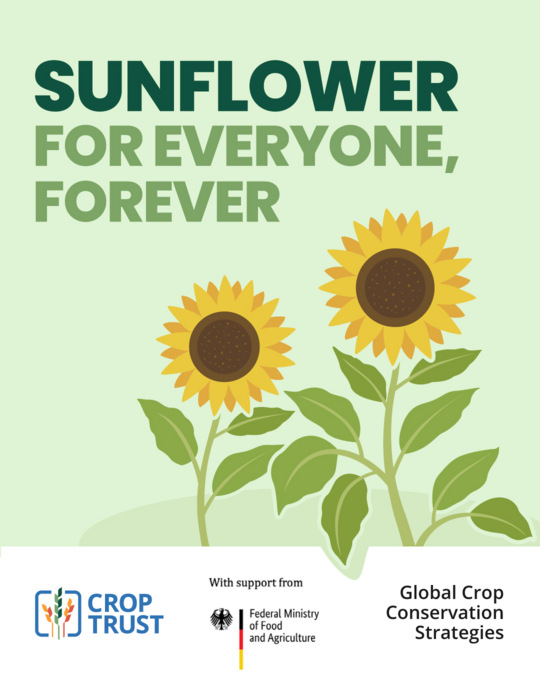- A multi-year effort to develop new strategies and update existing ones was funded by the German Federal Ministry of Food and Agriculture (BMEL).
- To gain an overview on the current state of the conservation and use of sunflower genetic resources, the Crop Trust commissioned Global strategy for the conservation and use of Sunflower (Helianthus annuus) Genetic Resources. This strategy supports the efficiency and effectiveness of sunflower diversity conservation at national, regional and international levels, and identifies priorities for strengthening the conservation and use of sunflower genetic resources.
- The process of developing this Global Strategy for the Conservation and Use of Sunflower Genetic Resources included: conducting a literature review, retrieving and analyzing accession-level information from open databases, and conducting a survey and virtual consultations with sunflower collection curators.
- The current global system of conservation and use of sunflower diversity is generally insecure, with a number of poorly resourced operations, limited availability of seed to all users, limited online sharing of accession-level information, and limited engagement of conservers and users globally, nationally, and locally.
- Some of these weaknesses are due to the fluctuating priority given to sunflower by international donors, national governments, public and private researchers, local authorities, farmers, urban markets, and consumers.
- Any decline in priority is a risk not only to ex situ conservation but also to the continued conservation of diversity in farmers’ fields. If and when the priority of the crop rises again, there may not be the diversity available to take advantage of the opportunity of the increased demand.
Did you know?
- The genus Helianthus includes about 50 species native to North America
- Native American people domesticated sunflower (Helianthus annuus) from wild H. annuus, which still exists today in parts of Canada, the United States, and Mexico.
- The average annual world production of sunflower seeds between 2016–2021 was estimated at around 52 million metric tons, covering over 27 million hectares in 73 countries.
- More than half of the world production is concentrated in Ukraine and Russia.
Priority actions recommended
Recommendations and priority actions were identified that aim to provide a framework for the efficient conservation and effective use of globally important collections of sunflower genetic resources. These are:
- Establish a global international advisory group (IAG) for the engagement of key collection holders and main users of sunflower genetic resources, and to lead the implementation of agreed priority activities.
- Establish a partnership among North American countries and address collection gaps for cultivated landraces and CWR
- Safety backup of cultivated and CWR accessions
- Rationalize the global sunflower collection and increase the accessibility of genetic diversity from CWR, landraces, and open-pollinated varieties
- Hold a meeting to discuss the future needs for conservation and use with key representatives of the users.

